Personal Narratives | Research Publications | Online Resources
Research Publications

“Drawing on nearly twenty years of fieldwork, as well as ethnohistory, politics, and economics, this volume takes a close look at changes in the lives of the indigenous Siberian Khanty people and draws crucial connections between those changes and the social, cultural, and political transformation that swept Russia during the transition to democracy. Delving deeply into the history of the Khanty—who were almost completely isolated prior to the Russian revolution—the authors show how the customs, traditions, and knowledge of indigenous people interact with and are threatened by events in the larger world.” (source)

“Stalin’s Peasants analyzes peasants’ strategies of resistance and survival in the new world of the collectivized village. Stalin’s Peasants is a story of struggle between transformationally-minded Communists and traditionally-minded peasants over the terms of collectivization–a struggle of opposing practices, not a struggle in which either side clearly articulated its position. But it is also a story about the impact of collectivization on the internal social relations and culture of the village, exploring questions of authority and leadership, feuds, denunciations, rumors, and changes in religious observance.”

“Memoirs of a Jew born to the Skorupa family in Kalisz, Poland, in 1921; pp. 49-111 relate his experiences under German occupation. Skorr was arrested with a younger brother, and sent to work on a farm. When they were forced to bury the bodies of murdered Jews, Skorr helped his brother escape and later jumped on a train that turned out to be heading toward Soviet-occupied territory. He then returned home and managed to rescue his family just before they were interned in the ghetto. He and his family repeated the route to the East, sharing the terrors of avoiding Nazi capture, and managed to cross over into the Soviet zone. Skorr almost joined Anders’ Army, but its Polish antisemitism made him fear being killed before seeing combat. He spent the rest of the war in the USSR, where he also experienced antisemitism, and his father and younger brother died while serving in the Soviet army. He returned to Poland in 1946 with his mother and three other siblings; after experiencing antisemitism there as well, the family left for Israel.” (source)

“Philipps opens his book with warm descriptions of German Russian villages as they were at the peak of their prosperity. The struggles of pioneering were over; the depredations of the Communists had not yet begun. He writes a brief history of South Russia to help us understand his experiences. This is the kind of personal book many may prefer to read about German-Russian history… He was probably one of the more fortunate ones during the Communist takeover. He was given training as an agriculturist and assigned to a job in a Machine Tractor Station, a special kind of unit that provided and maintained tractors and other machines for the collective farms in an area. That is where he was when Hitler’s armies swept into South Russia in 1941, and he went to Germany with panicky refugees in 1945, just ahead of the Russian advance. He was drawn into the German army, along with Peter Pfeifer of Elsass, possibly a relative of North Dakota German-Russians. In 1955, with the help of Alexandra Tolstoy, a Russian woman who also helped others to get out of the clutches of the Communists, he migrated to the United States. Philipps was nervous about writing this book and says he omitted names for fear of reprisals to families still living in Russia. But he was a sharp observer and he understands where his personal experiences fit into the larger historical picture. You may appreciate knowing how it was from someone who personally lived during this very difficult time. He attended a convention of the Germans from Russia Heritage Society several years ago, and it was truly exciting to see this German-Russian hero in the flesh.” (source)
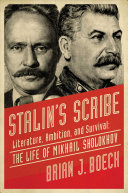
“Mikhail Sholokhov is arguable one of the most contentious recipients of the Nobel Prize in Literature. As a young man, Sholokhov’s epic novel, Quiet Don, became an unprecedented overnight success. Stalin’s Scribe is the first biography of a man who was once one of the Soviet Union’s most prominent political figures… Stalin’s Scribe is remarkable biography that both reinforces and clashes with our understanding of the Soviet system. It reveals a Sholokhov who is bold, uncompromising, and sympathetic—and reconciles him with the vindictive and mean-spirited man described in so many accounts of late Soviet history.” (source)

“A Russian journalist provides a haunting account of the Lykovs, a family of Old Believers, members of a fundamentalist sect, who, in 1932, went to live in the depths of the Siberian Taiga and have survived for more than fifty years apart from the modern world.” (source)

“The study offers a new perspective not only on the period of collectivization, industrialization, and terror but also on the regime’s most rudimentary method of controlling human behavior and reshaping the social order. In her conclusion the author analyzes the long-term impacts of the Stalinist “dictatorship of distribution”, from bureaucratization to rural depopulation to the emergence of a distinctive type of black-market economy.” (source)

“В книге рассмотрены практики выживания российских ученых в условиях гражданского противостояния (1917–1920 гг.). Территориальные рамки исследования – регионы России, большую часть времени находившиеся под властью антисоветских режимов, ставшие центрами массовой миграции столичного населения. Произведенный автором анализ дневников, мемуаров, личной переписки ученых, документов вузов, научно-исследовательских учреждений, периодической печати позволил понять, как люди науки отвечали на вызовы Гражданской войны.” (source)
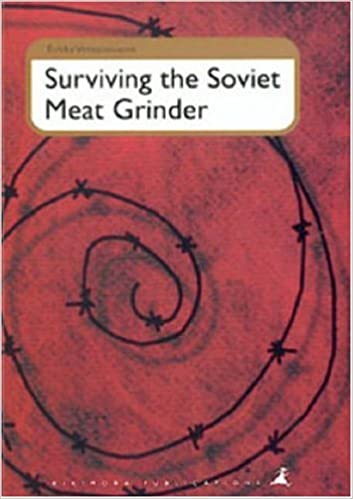
“In this study, the Finnish Gulag memoirs are considered as testimonies on Soviet communism. More than thirty memoirs have been published from the early 1920s to the late 1990s. Thus, the entire Soviet era can be taken into consideration.” (source)
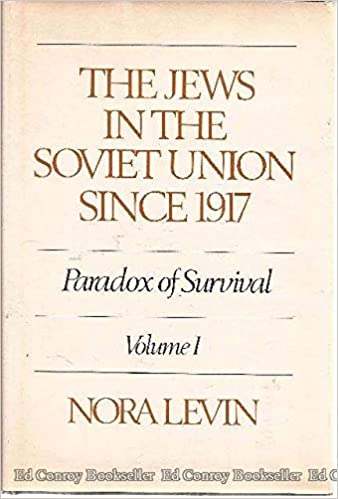
“A comprehensive and well-documented survey of Soviet Jewry up to the Gorbachev era by the author of several books on Jewish history. Based largely upon secondary and some primary sources, mainly in English, these volumes form a highly detailed and readable account for a wide audience.” (source)

“A comprehensive history of the Jews in the Soviet Union in the 20th century, this book offers a portrait of Soviet Jewry from the overthrow of the Tsarist regime by the Bolsheviks and takes the reader through pogroms, resettlements, World War II, and the Stalin era, to present-day refuseniks.” (source)

“To the Tashkent Station brilliantly reconstructs the evacuation of over sixteen million Soviet civilians in one of the most dramatic episodes of World War II.Rebecca Manley paints a vivid picture of this epic wartime saga: the chaos that erupted in towns large and small as German troops approached, the overcrowded trains that trundled eastward, and the desperate search for sustenance and shelter in Tashkent, one of the most sought-after sites of refuge in the rear.”
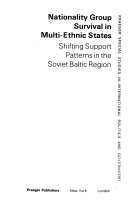


“An Engaging Account of life in today’s turbulent Russia, this book faithfully presents the richly contradictory views of Muscovites and rural Russians on their work, their families and communities, their government, and their daily lives.” (source)

“The book’s approach is mainly historical; nevertheless it focuses on some of the most important and controversial present day international challenges both in Europe and Asia. Its aims to address academics, journalists and other specialists, but also is written for the general public.” (source)

“It is the first book to have been written in English on penal practices in the contemporary Russian prison system. Surviving Russian Prisons focuses in particular on the reality of work and labour within Russian prisons, exploring its changing function. From being for much of the twentieth century a major activity as well as an ideological justification for prison regimes, its main function now has been to enable prisoners to survive through participating in a barter economy. In exploring the microworlds of the Russian prison this book at the same time presents new evidence and offers fresh insight into how prisons are governed in societies undergoing turbulent social and political transformation; it explores how current practices in relation to prisoners’ work comply with international regulations designed to promote humane containment and positive custody; and debates the nature of knowledge on penal discourse in transitional states.” (source)
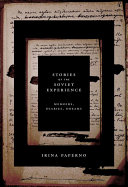
“In a major new work on private life and personal writings, Irina Paperno explores this massive outpouring of human documents to uncover common themes, cultural trends, and literary forms. The book argues that, diverse as they are, these narratives—memoirs, diaries, notes, blogs—assert the historical significance of intimate lives shaped by catastrophic political forces, especially the Terror under Stalin and World War II. Moreover, these published personal documents create a community where those who lived through the Soviet era can gain access to the inner recesses of one another’s lives… With a sure grasp of Russian cultural history, great sensitivity to the men and women who wrote, and a command of European and American scholarship on life writing, Paperno places diaries and memoirs of the Soviet experience in a rich historical and conceptual frame.” (source)

“This book is the first to attempt to retrieve their stories and reconstruct their lives, drawing upon recently declassified archives of the former Soviet Secret Police in Kiev. Hiroaki Kuromiya uncovers in the archives the hushed voices of the condemned, and he chronicles the lives of dozens of individuals who shared the same dehumanizing fate: all were falsely arrested, executed, and dumped in mass graves. Kuromiya investigates the truth behind the fabricated records, filling in at least some of the details of the lives and deaths of ballerinas, priests, beggars, teachers, peasants, workers, soldiers, pensioners, homemakers, fugitives, peddlers, ethnic Russians, Ukrainians, Poles, Germans, Koreans, Jews, and others. In recounting the extraordinary stories gleaned from the secret files, Kuromiya not only commemorates the dead and forgotten but also proposes a new interpretation of Soviet society that provides useful insights into the enigma of Stalinist terror.” (source)

“This is a biography of a borderland between Russia and Poland, a region where, in 1925, people identified as Poles, Germans, Jews, Ukrainians, and Russians lived side by side. Over the next three decades, this mosaic of cultures was modernized and homogenized out of existence by the ruling might of the Soviet Union, then Nazi Germany, and finally, Polish and Ukrainian nationalism. By the 1950s, this “no place” emerged as a Ukrainian heartland, and the fertile mix of peoples that defined the region was destroyed… Drawing on recently opened archives, ethnography, and oral interviews that were unavailable a decade ago, A Biography of No Place reveals Stalinist and Nazi history from the perspective of the remote borderlands, thus bringing the periphery to the center of history.” (source)